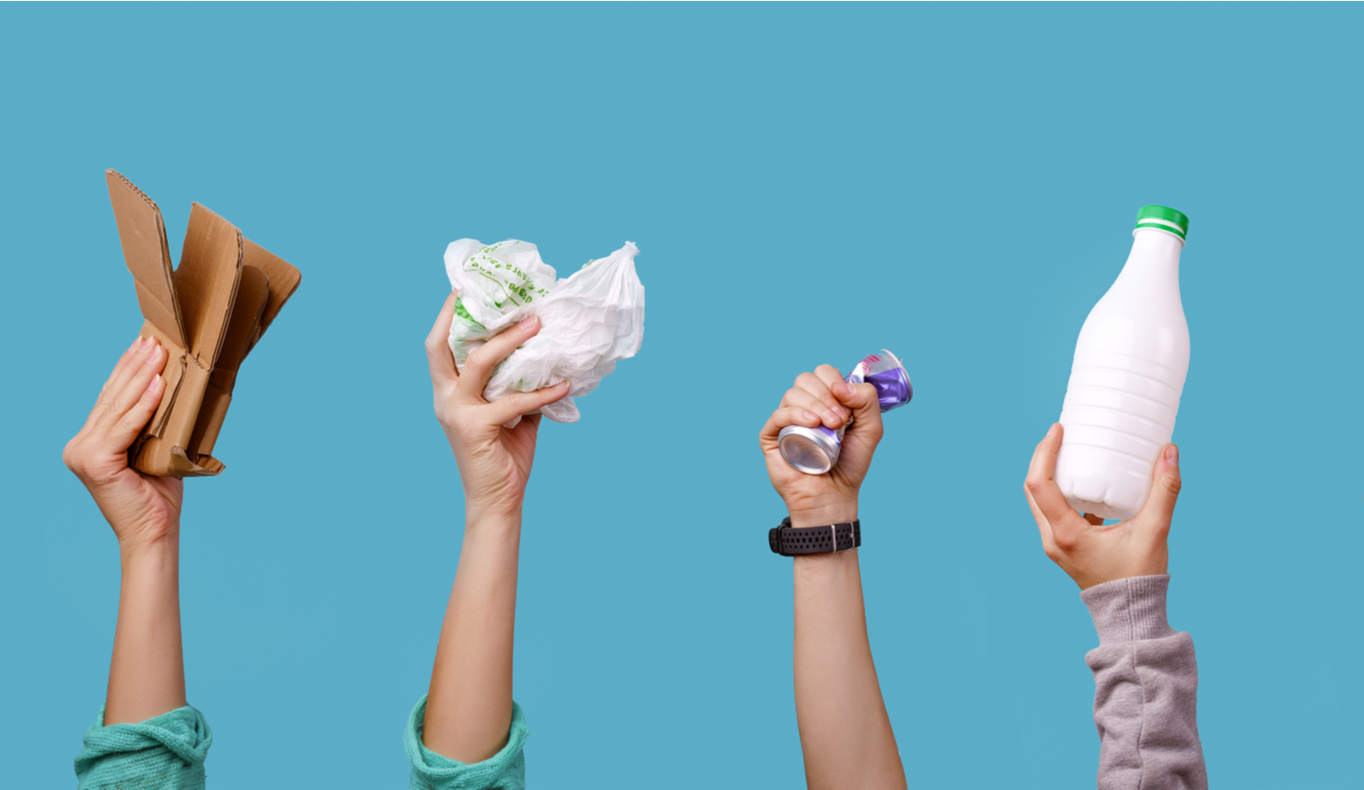Technology helps reduce waste for consumers and businesses
There’s a long way to go, but innovative technology is proving key to tackling waste on the global scale needed to protect our planet.
Waste doesn’t just mean physical deposits into landfill. It’s also about overconsumption and excess, from squandering energy or making unnecessary journeys to wasting water or making needless purchases, even if they are supposedly environmentally friendly. Environmental campaigners promote the mantra ‘reduce, reuse, recycle’ – if you can avoid demanding, producing and discarding an item in the first place, that means there’s less need to resort to recycling as a third best option.
The will to reduce waste is there and growing among consumers. But they need easy and affordable ways to choose low-waste lifestyles and products. Businesses, governments and service providers are stepping up to the challenge of becoming more efficient and sustainable to enable large-scale change. Everyone’s looking to technology for ground-breaking, digitally enabled approaches to waste reduction.
Convenience is key for consumers to prioritise waste reduction
Phone apps can help consumers to manage their waste. Waste processors like re3 have developed apps that provide information about recycling facilities and let people book visits to recycling centres. Local authorities have developed app-based incentives: in Nottingham, residents can earn points and prizes through the Green Rewards scheme by reducing waste with simple actions, from turning off lights to using public transport or recycling responsibly.
Capsule coffee machine owners can arrange free recycling collections for their used capsules through apps or on websites, making it easy to return rather than binning old capsules from brands including Nespresso and Dolce Gousto.
These are encouraging schemes that help avoid waste going into landfill. But there’s scope to use apps and consumer tech to prevent the creation of waste in the first place. The Scrapp app goes further, giving consumers information about the CO2 they save with each responsible recycling action and helping them reduce waste by understanding the carbon footprint of household items, so they can choose better to waste less of the planet’s resources. It also offers a reward scheme.
Apps help promote reuse as well as recycling
Using more reusable containers within a genuine circular economy, rather than recyclable ones, would cut down on production. Supermarket deliveries might arrive in sturdy bags or crates that consumers would retain until the next visit or drop off at a collection point. Applying tracker device technologies (similar to the Tile or AirTag) could make this viable, avoiding loss and theft and making sure customer deposits were refunded accurately and promptly.
This technology can also work for grocery goods bought in-store in reusable containers. Tesco and Loop have been trialling reusable containers for groceries through an app that manages deposits and refunds.
The UK recycling rate for waste from households was 46.2% in 2019
Better planning and analytics help transport organisations cut fuel waste
Commercially and on a much larger scale, technology solutions are helping businesses reduce their consumption of resources, from designing products to use fewer raw materials to cutting down on the energy needed for operations and services.
CACI’s Real-Time Airport system is helping customers in the aviation sector reduce fuel usage. By optimising aircraft movements through algorithms and analytics, Heathrow airport can delay planes starting their engines and cut down on the time they spend queuing before take-off with the engines running.
This has created a massive 10% overall reduction in taxi times at Heathrow – that’s a significant benefit to the environment through reduced fuel burn as well as a better experience for air passengers.
Data modelling can make waste reduction a key factor in overall strategy
Increasingly, organisations will use advanced modelling and simulation to understand the impact of their actions on waste generation. Building in energy and carbon consumption to business models means that companies can shape their strategy and prioritise their activities to minimise waste.
Rapidly evolving artificial intelligence and machine learning capabilities can process more and more detailed and subtle information and show in depth the full range of consequences both for waste generation and wasteful use of resources. Companies can promote their low-waste approaches to customers and show the evidence behind their choices. It’s a more innovative and proactive approach to doing things very differently, rather than trying to reform old, wasteful ways of operating.
Digital convenience is key to influencing behaviour and sharing information
Apps, devices and websites use the power of digital media to raise the profile of waste-reduction and nudge consumers into making better choices. Apps like Nest provide information about heating costs and energy consumption then optimise energy usage throughout the day, cutting down on waste in gas and electricity. Utilities companies provide and connect digital smart meters, giving consumers real-time information on resource consumption so they have the power to change their habits to reduce bills and therefore usage.
Community websites and apps (such as Freecycle and Freegle) for passing on consumer goods and appliances locally give consumers a quick way to get rid of unwanted items or meet a need without buying new.
Private messaging protects privacy and means people don’t have to share their address until they’re sure the other person is genuine.
Carrie Johnson and other celebrities have raised the profile of fashion hire through platforms like My Wardrobe HQ, making it cool to rent an outfit for a smart occasion rather than buying new and discarding outfits after one or two wears. High quality digital photography and easy booking through online apps create a frictionless experience that high-end consumers are willing to embrace.
Using fuel more wisely and optimising electric vehicle transit
In travel and transport, ridesharing and public transport e-ticketing and information apps make it easier for customers to travel conveniently without needing to run their own vehicle, cutting down on private fuel usage.
Home delivery services operated on fast and efficient digital platforms cut down on individual journeys to the shops. But they have driven an explosion in courier and commercial delivery services, adding to urban congestion. Leading delivery networks already use logistics technology and data to optimise the efficiency of their delivery fleets, selecting the best routes and delivery sequences to cut down on fuel usage. As electric vehicles become more commonplace, adaptive software is key to planning routes that factor in battery life and charging times.
CACI route optimisation tools typically save clients between 5% and 25% on fuel consumption. The bigger the vehicle fleet, the greater the saving.
Reduce and re-use first and second
Recycling is good, but reducing and reusing are better, when it comes to waste reduction. Consumers and businesses are both tapping into the power of digital apps and data analytics to inform themselves and adopt new approaches that cut consumption of goods and resources.
Already, organisations can achieve substantial reductions in energy consumption and wasted materials by optimising their processes and harnessing technology to eliminate inefficiencies across their operations. Digital innovation makes it possible to combine this approach with user-friendly apps and websites, so it’s easier for customers to understand the impact of their choices and to consume and waste less.
If you’d like to know more about optimising processes and energy efficiency through data science or developing waste-reducing digital services and tools that meet current consumer needs, talk to the experts at CACI.
Want to read more from our ESG blog series?
- Climate risk disclosure is just the beginning
- Data is key for successful businesses to take decisive action on sustainability
- Driving smoothly into the consumer EV market
- Responsible and sustainable practices

